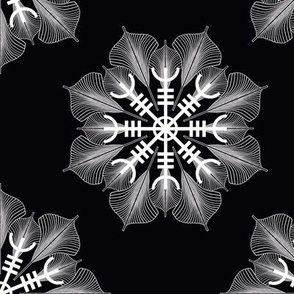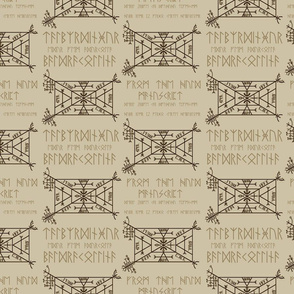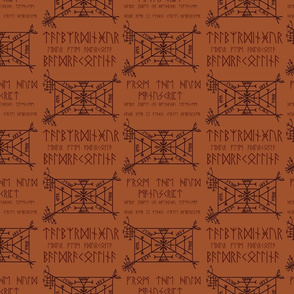All designs by Lori Christensen
Hello. I'm happy to customize designs to fit your needs. Just send me a message. Copyright © Lori Christensen 2008-2024
Description:
Nordic runes and motifs. vegvísir (Icelandic for sign post or wayfinder) is an Icelandic magical stave intended to help the bearer find their way through rough weather. The symbol is attested in the Huld Manuscript, collected in Iceland by Geir Vigfusson in 1880 (but consisting of material of earlier origin). A leaf of the manuscript provides an image of the vegvísir, gives its name, and, in prose, declares that "if this sign is carried, one will never lose one's way in storms or bad weather, even when the way is not known". Helm of Awe or Helm of Terror (Icelandic: Ægishjálmur, Old Norse Œgishjalmr) is an object in Norse mythology and subsequently the name of an Icelandic magical stave. The symbol used for the reference in the sagas came from the Huld manuscript written and collected in 1847. The symbol has no historical evidence prior to this. It was used as a part of a Christian magic ritual that "may" have had some movements rooted in Icelandic culture, but was very common ritualistic practice across Christendom. A physical object called the "Helm of Terror" is referenced as one item Sigurd takes from the dragon Fafnir's hoard after he slays him in Völsunga saga. Stanza 16 of Fáfnismál in the Poetic Edda also mentions: The Helm of Awe I wore before the sons of men In defense of my treasure; Amongst all, I alone was strong, I thought to myself, For I found no power a match for my own.





























